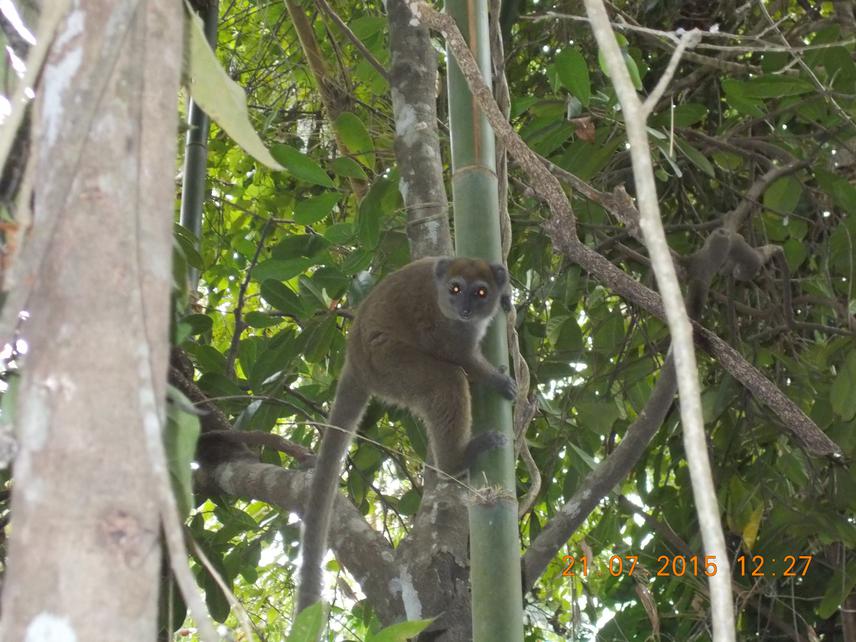Sylviane Volampeno
Other projects
9 Aug 2013
Combining Ecological Research and Local Community Involvement to Achieve Long-Term Conservation of the Critically Endangered Blue-Eyed Black Lemur
27 May 2015
Advancing the Conservation of the Blue-Eyed Black Lemur: Research, Awareness Raising and Development of Alternative Livelihoods
The project will assess all lemur species within the forest and its habitat that will allow updating the population estimate of each lemur species and the vegetation type. It will also train the local communities’ members that built their capacity for lemur survey and forest control. By conducting reforestation, the remaining lemur forest habitat will be extended and by planting exotic trees, the local communities will have enough of tress for their basic needs. The fact that the forest is still unprotected the local communities are still unaware of threats facing thus we will raise their awareness about the importance and necessity of the protection of the lemurs and its habitat by implementing education and outreach.

Hapalemur occidentalis.
The Andilambologno forest which is located in the north-western part of Madagascar possesses high endemic biodiversity including lemurs, birds, reptiles and amphibians. We were the first to conduct a lemur biological survey within the Andilambologno forest in 2015; our results revealed that the forest inhabits four lemur species including the blue-eyed black lemur, the Northern giant mouse lemur, the Aye-aye and the Western lesser bamboo lemur. Others lemur species might also occur in this forest and should be surveyed. Without doubt, the local communities surrounding the forest of Andilambologno exploit the natural resources of the forest as it is still unprotected. Consequently, we decided to implement an immediate lemur conservation action due to the importance of the forest in term of biodiversity.
The project will assess all lemur species within the forest and its habitat that will allow updating the population estimate of each lemur species and the vegetation type. It will also train the local communities’ members that built their capacity for lemur survey and forest control. By conducting reforestation, the remaining lemur forest habitat will be extended and by planting exotic trees, the local communities will have enough of tress for their basic needs. The fact that the forest is still unprotected the local communities are still unaware of threats facing thus we will raise their awareness about the importance and necessity of the protection of the lemurs and its habitat by implementing education and outreach.